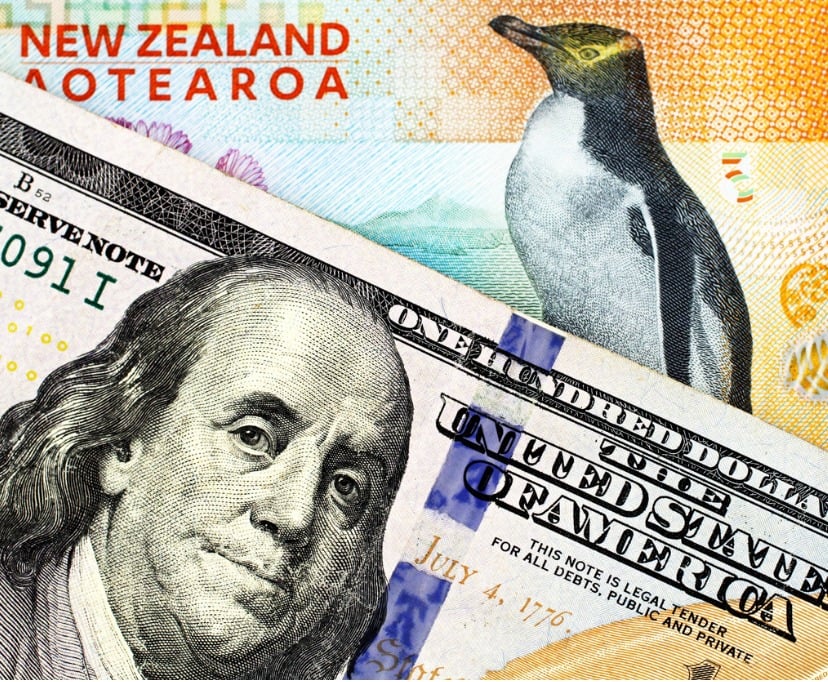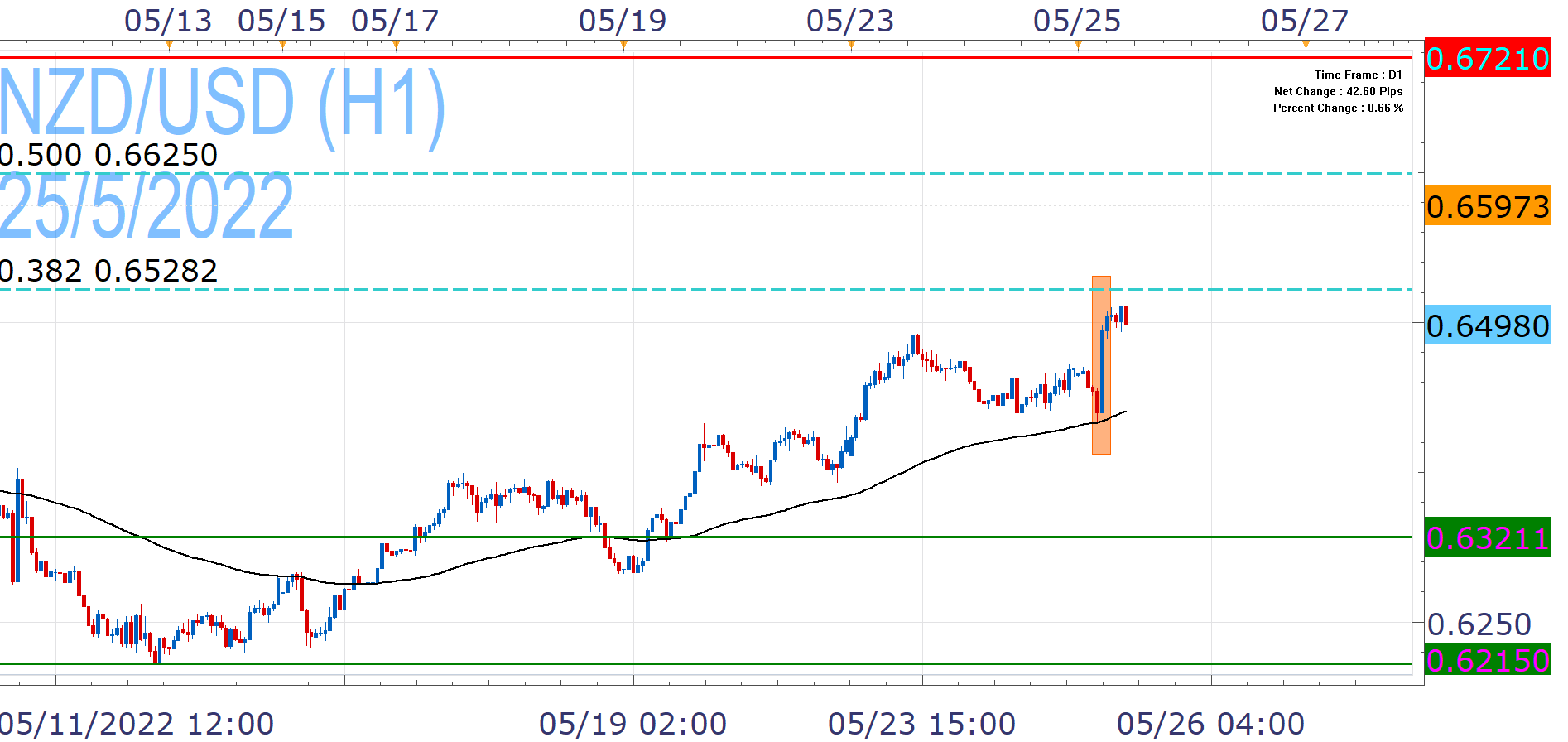The Reserve Bank of New Zealand Hiked Rates to the Highest Level in 6 Years, Signaled More Moves Ahead

RBNZ New Rate Hike & Aggressive Tightening Path
The Reserve bank of New Zealand increased interest rates to 2%, a level last seen in September 2016 [1]. This was the second straight 50 basis points hike, something that the bank has never done since 1999, when the official cash rate (OCR) was introduced.
The Monetary Policy Committee justified the aggressive move, saying that larger and earlier increases, reduce the risk of "inflation becoming persistent", while providing "flexibility" in a "highly uncertain global economic environment".
Furthermore, today's move marked the fifth consecutive interest rate rise since, since this tightening cycle started in October 2020, prior to which, the OCR stood at 0.25%.
The central bank reiterated its aggressive stance and pointed to more action ahead, saying that it remains "appropriate" to continue monetary tightening at pace to "maintain price stability and support maximum sustainable employment".
The RNNZ also published the latest Monetary Policy Statement, which includes its economic projections [2]. It upgraded the official cash rate (OCR) forecast, now seeing it at 3.4% by the end of the year, from 3.3% in the previous projections.
The updated forecast points to a very hawkish interest rates path, since the central bank has four more policy meetings left this year.
Inflation Drives the Tightening Cycle
Many countries and economies are plagued by soaring inflation in the aftermath of the Covid-19 pandemic and the war in Ukraine. Reacting to that, most major central banks have reacted by normalizing the ultra-loose monetary policies in order to bring inflation down.
The Reserve Bank of New Zealand is at the forefront of this monetary tightening and today it reaffirmed its focus on inflation, noting that it is "resolute" in its commitment to lower consumer price inflation the 1%-3% target range.
New Zealand's Consumer Price Index (CPI) surged 6.9% in the first quarter of 2022 year-over-year, from 5.9% prior, marking the highest in more than 30 years.
This was above the RBNZ's expectations, but the central bank upgraded its forecasts today, projecting annual CPI to peak at 7% in the first half of the year, from 6.6% in March previously. [2]
On the other hand, these policies have a negative impact of economic activity, with the RBNZ expecting weaker growth over the second half of 2022, due to higher interest rates, lower consumer confidence and recent falls in house prices.
RBNZ vs US Fed
The US Federal Reserve may have made a hawkish pivot late in 2021, to focus on inflation and tighten its monetary policy, but the Reserve Bank of New Zealand is far ahead in this process, since it had concluded its quantitative easing program almost a year ago and has already delivered five consecutive rate increases.
The US central bank made a hawkish pivot late in 2021, to make fighting inflation its top priority and embarked on an aggressive and front-loaded normalization path. This has led to the conclusion of the asset purchases program a couple of month's bank and two rate straight rate hikes, with the one in May, being the largest in 22 years.
However, in that last policy meeting, Chair Powell appeared conservative in regards to future moves, having said that half-percentage point increases "would be on the table at the next two meetings" and had shut the door in lager 75 basis points adjustments, which is "not something the Committee is actively considering". [3]
The RBNZ on the other hand, was very hawkish today and pointed to more rate hikes ahead in order to reign in consumer prices back to its target and also upgraded its rate projections as noted above.
NZD/USD Analysis
The pair jumped after the RBNZ's central bank aggressive rate move and future hike prospects and runs its second straight profitable week, while short-term momentum is bullish as the Kiwi trades above the EMA200 (black line). It now tries to take-out 38.2% Fibonacci of 2022 High/Low drop (0.6528), which could open the door to a further recovery towards and beyond the 50% level (0.6627).
Despite today's rally, broader bias remains on the downside and NZD/USD faces headwinds ahead of the aforementioned 38.2% mark, while market sentiment is fragile as investors continue to grapple with stagflation fears.
As such, we could see renewed pressure back to the EMA100 and the 0.6430-00 area, although significant deterioration in sentiment would likely be needed for bigger losses towards 0.6321-00.
From today's economic calendar, markets await the minutes for the Fed's last policy meeting and the US Durable Goods Orders, which could determine the pair's next move.

Nikos Tzabouras
Senior Financial Editorial Writer
Nikos Tzabouras is a graduate of the Department of International & European Economic Studies at the Athens University of Economics and Business. He has a long time presence at FXCM, as he joined the company in 2011. He has served from multiple positions, but specializes in financial market analysis and commentary.
With his educational background in international relations, he emphasizes not only on Technical Analysis but also in Fundamental Analysis and Geopolitics – which have been having increasing impact on financial markets. He has longtime experience in market analysis and as a host of educational trading courses via online and in-person sessions and conferences.
References
| Retrieved 25 May 2022 https://www.rbnz.govt.nz/news/2022/05/monetary-conditions-tighten-by-more-and-sooner | |
| Retrieved 25 May 2022 https://www.rbnz.govt.nz/-/media/ReserveBank/Files/Publications/Monetary policy statements/2022/mpsmay22.pdf | |
| Retrieved 19 Apr 2024 https://www.federalreserve.gov/monetarypolicy/fomcpresconf20220504.htm |


Any opinions, news, research, analyses, prices, other information, or links to third-party sites contained on this website are provided on an "as-is" basis, as general market commentary and do not constitute investment advice. The market commentary has not been prepared in accordance with legal requirements designed to promote the independence of investment research, and it is therefore not subject to any prohibition on dealing ahead of dissemination. Although this commentary is not produced by an independent source, FXCM takes all sufficient steps to eliminate or prevent any conflicts of interests arising out of the production and dissemination of this communication. The employees of FXCM commit to acting in the clients' best interests and represent their views without misleading, deceiving, or otherwise impairing the clients' ability to make informed investment decisions. For more information about the FXCM's internal organizational and administrative arrangements for the prevention of conflicts, please refer to the Firms' Managing Conflicts Policy. Please ensure that you read and understand our Full Disclaimer and Liability provision concerning the foregoing Information, which can be accessed here.